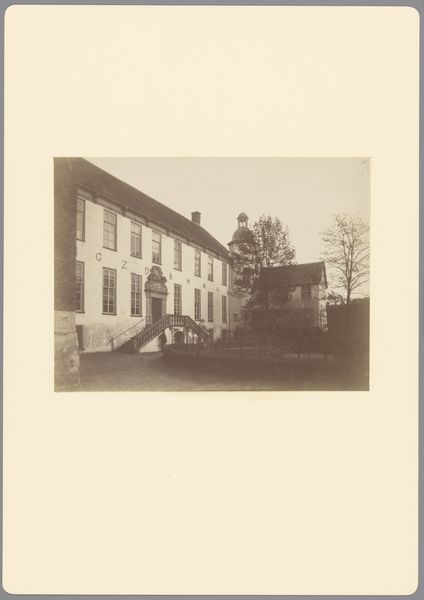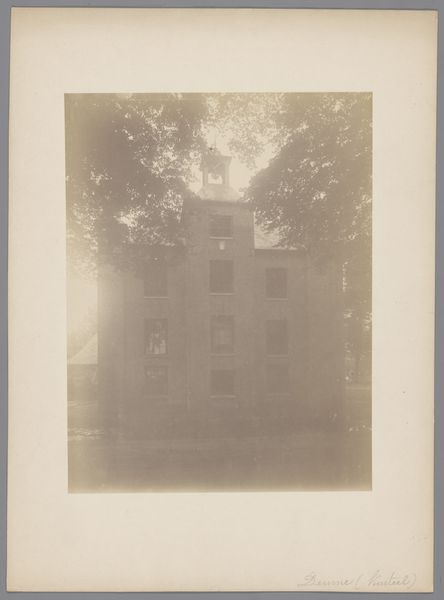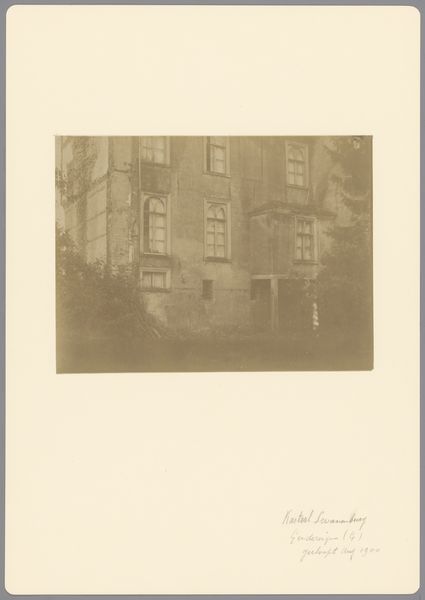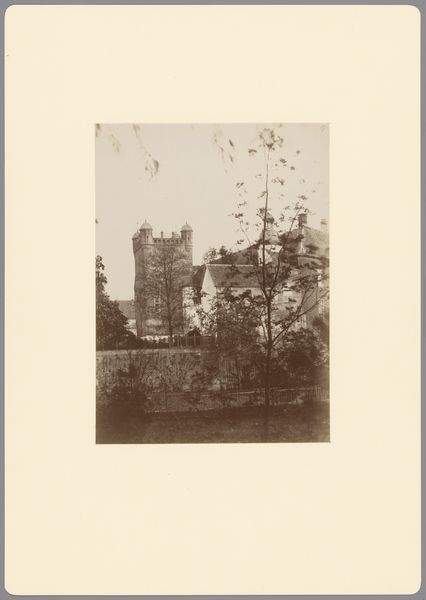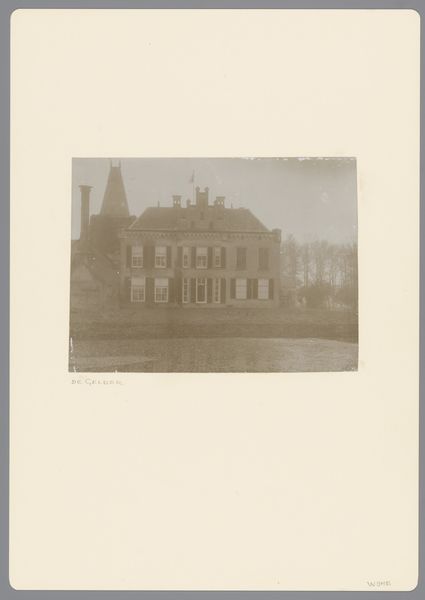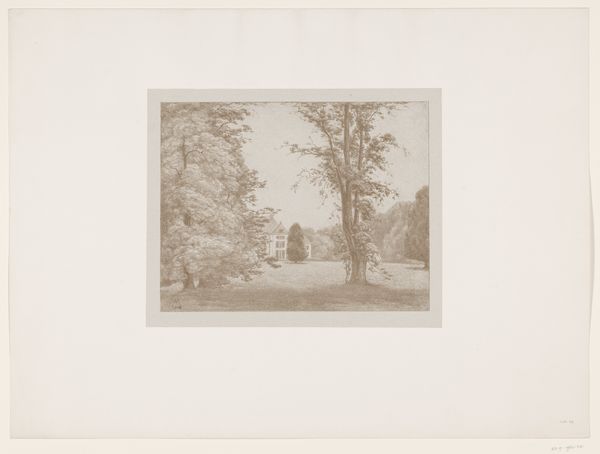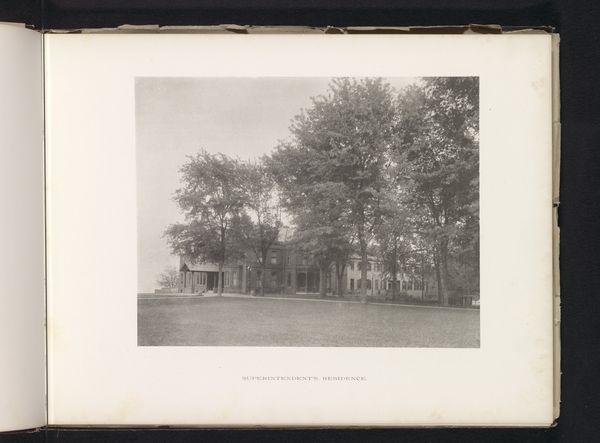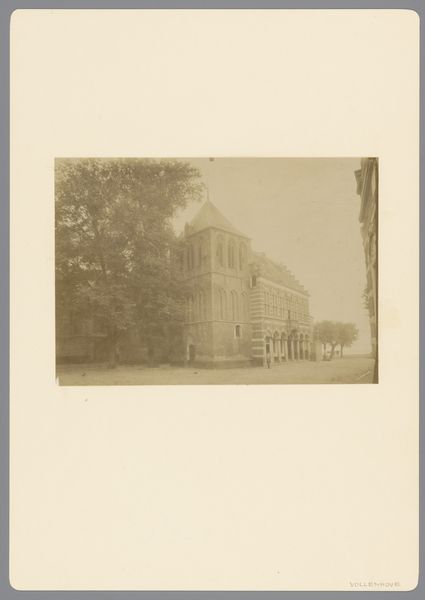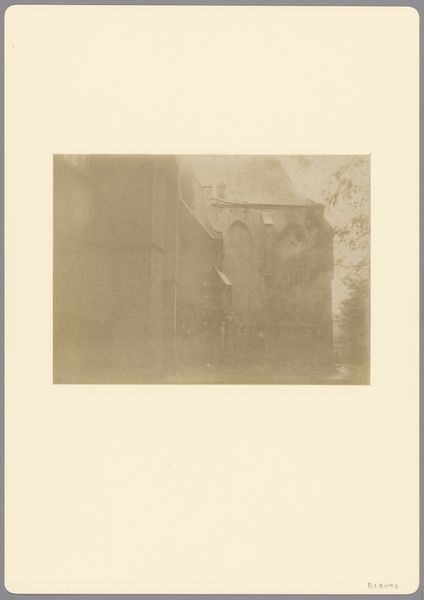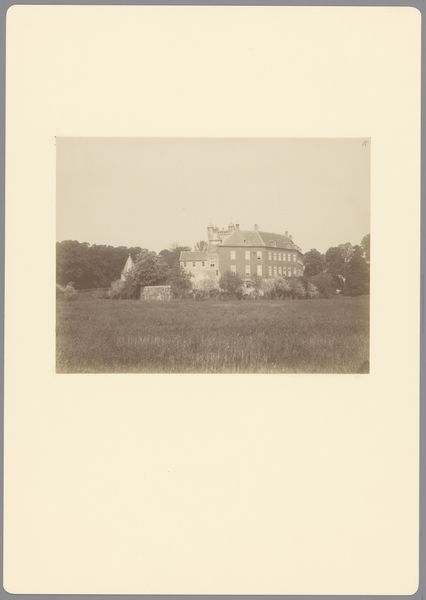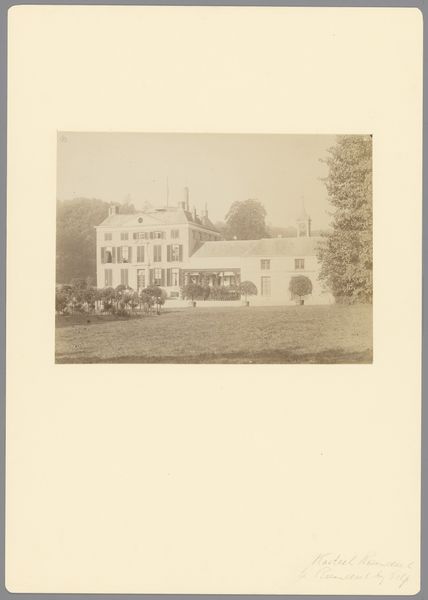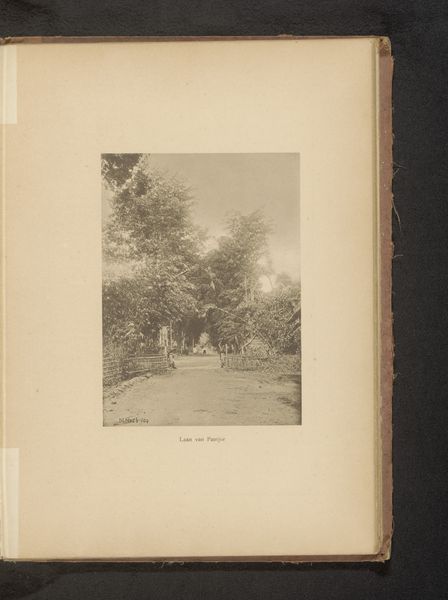
Dimensions: height 167 mm, width 232 mm
Copyright: Rijks Museum: Open Domain
Editor: We're looking at a photographic print entitled "Gezicht op de tuin bij Kasteel Rozendael," dating from between 1890 and 1920, artist unknown. It’s a landscape featuring a castle tower, a reflecting pool, and some kind of arcade in the distance. The sepia tone creates a feeling of stillness. What strikes you about the composition? Curator: Formally, the image presents a fascinating study in contrasts. The solid verticality of the tower on the left is juxtaposed against the horizontal expanse of the landscape. Observe how the reflecting pool acts as a visual pivot, mirroring the architectural elements and disrupting any simplistic reading of depth. What, in your view, is the effect of this mirrored surface? Editor: I think the reflection doubles the architectural elements while simultaneously distorting them, making the image feel less concrete, more dreamlike. Curator: Precisely. Consider the materiality of the photograph itself. The limited tonal range and soft focus flatten the scene, drawing attention to the interplay of light and shadow as compositional devices. Semiotically, the classical arcade suggests an idealized past. The photographic medium itself, however, anchors the scene in a specific moment of observation. Are those contradictory statements? Editor: Maybe not entirely contradictory. The arcade’s symbolism coexists with the very real medium and the specific moment it captures. Curator: Precisely! It's through recognizing those subtle visual relationships, those juxtapositions and tensions, that we can begin to understand the artistic choices, even with an anonymous work like this. It reminds us to closely observe visual properties without external dependencies such as authorship, doesn't it? Editor: Absolutely! It really highlighted the power of purely visual analysis, focusing on light and shadow and how architectural shapes interacted within the composition itself. Thanks!
Comments
No comments
Be the first to comment and join the conversation on the ultimate creative platform.
